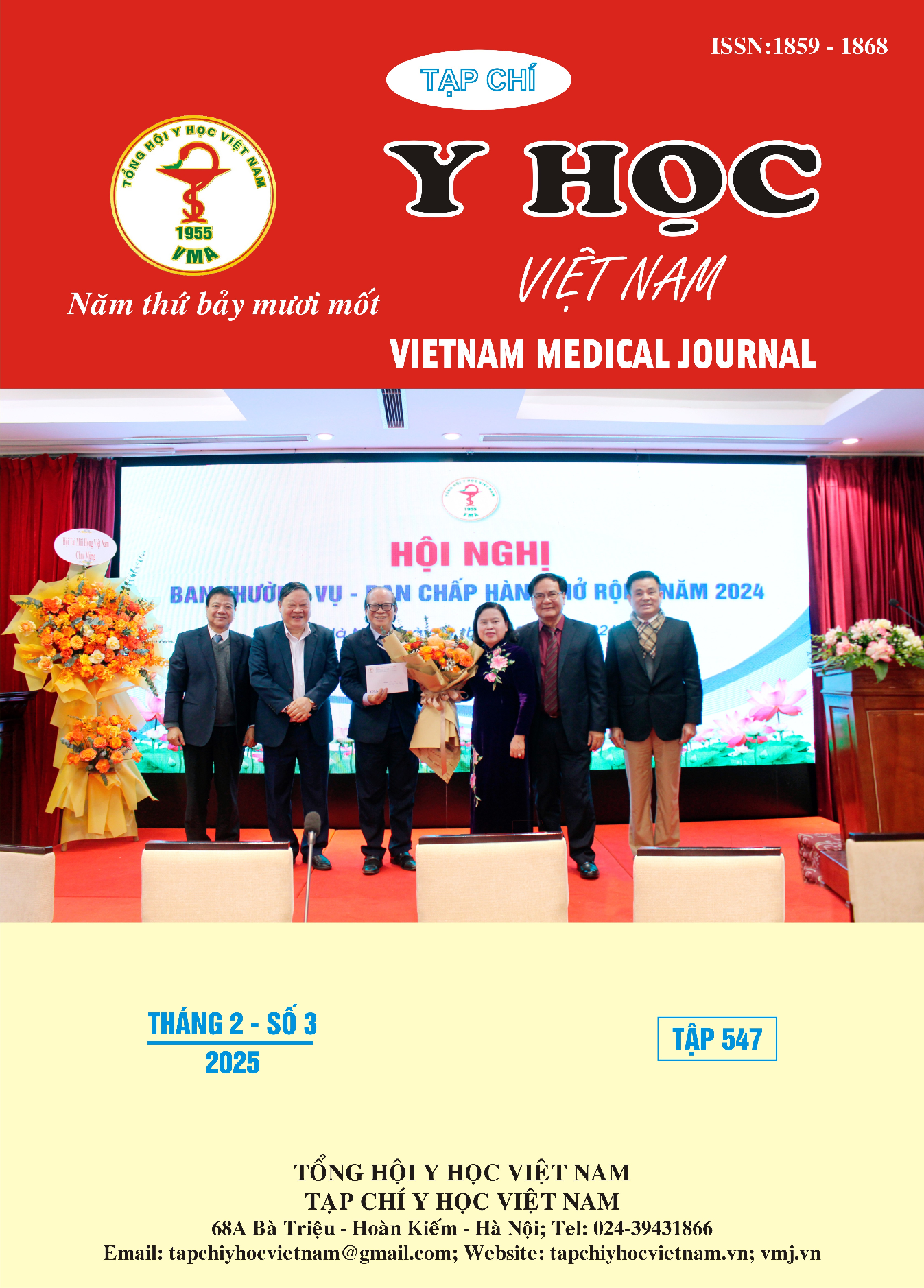SURGICAL RESULTS OF ENDOSCOPIC ENDONASAL TRANSSPHENOIDAL SURGERY FOR GIANT PITUITARY ADENOMA
Main Article Content
Abstract
Introduction: Giant pituitary adenomas present a significant challenge in neurosurgery. This study aimed to evaluate the outcomes of the endoscopic transsphenoidal approach for the removal of these tumors. Patients and Methods: A retrospective analysis was conducted on 28 cases of giant pituitary adenomas that underwent endoscopic transsphenoidal resection at Cho Ray Hospital between November 2020 and July 2024. Results: The study included 28 patients with a median age of 54 years (range: 40-71 years). The median tumor size was 47.5 mm (range: 40-62 mm). Complete tumor removal was achieved in 14.3% (n=4) of cases, near-complete removal in 57.1% (n=16), and partial removal in 28.6% (n=8). Postoperative vision improvement was observed in 75% (n=21) of patients. A total of 46.4% (n=13) received postoperative radiosurgery. After a median follow-up of 18.8 months (range: 0.9-46.6 months), tumor recurrence occurred in 7.1% (n=2) of patients. Complications included hemorrhage in 7.1% (n=2), cerebrospinal fluid leakage in 7.1% (n=2), and one mortality (3.6%) due to hemorrhage. Factors associated with the extent of tumor removal included multilobulated tumors, cavernous sinus invasion, and extension into the inferior lateral ventricles. Conclusions: The endoscopic transsphenoidal approach is a safe and effective method for the removal of giant pituitary adenomas. Surgical experience and thorough preoperative imaging assessment are critical for optimizing outcomes.
Article Details
Keywords
Giant pituitary adenomas, Endoscopic transsphenoidal approach, pituitary endocrinological disorders.
References
2. Makarenko, S., et al., Outcomes and surgical nuances in management of giant pituitary adenomas: a review of 108 cases in the endoscopic era. Journal of Neurosurgery, 2022. 137(3): p. 635-646.
3. Gondim, J.A., et al., Giant pituitary adenomas: surgical outcomes of 50 cases operated on by the endonasal endoscopic approach. World Neurosurg, 2014. 82(1-2): p. e281-90.
4. Koutourousiou, M., et al., Endoscopic endonasal surgery for giant pituitary adenomas: advantages and limitations. J Neurosurg, 2013. 118(3): p. 621-31.
5. Elshazly, K., et al., Clinical Outcomes After Endoscopic Endonasal Resection of Giant Pituitary Adenomas. World Neurosurgery, 2018. 114: p. e447-e456.
6. Gaia, F., et al., Analyzing giant pituitary adenomas: An 8-year review (2012–2020) at a reference center in Brazil. Clinical Neurology and Neurosurgery, 2022. 213: p. 107138.
7. Knosp, E., et al., Pituitary adenomas with invasion of the cavernous sinus space: a magnetic resonance imaging classification compared with surgical findings. Neurosurgery, 1993. 33(4): p. 610-7; discussion 617-8.
8. Ajlan, A., et al., Cavernous Sinus Involvement by Pituitary Adenomas: Clinical Implications and Outcomes of Endoscopic Endonasal Resection. J Neurol Surg B Skull Base, 2017. 78(3): p. 273-282.
9. Kim, M., et al., Gamma Knife surgery for invasive pituitary macroadenoma. J Neurosurg, 2006. 105 Suppl: p. 26-30.
10. Cordeiro, D., et al., Hypopituitarism after Gamma Knife radiosurgery for pituitary adenomas: a multicenter, international study. J Neurosurg, 2019. 131(4): p. 1188-1196.


